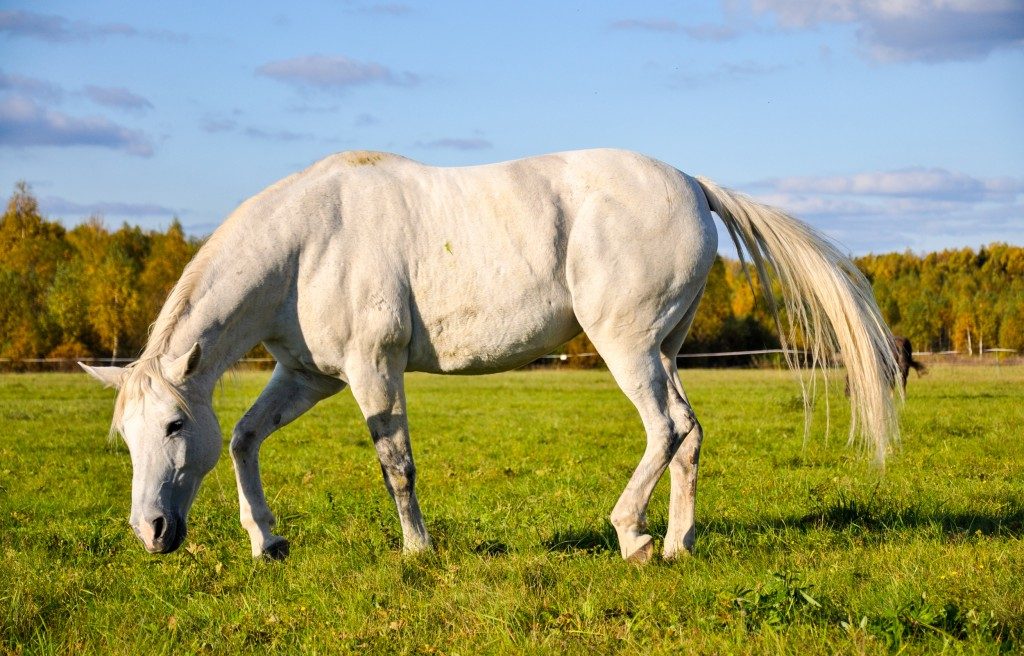Do you know that headstall and bridle are sometimes used interchangeably by horse enthusiasts? But they are actually different from each other. So, when talking with fellow aficionados, it is essential that you know the proper terms for horse’s equipment to exude good horsemanship, as it goes beyond good riding.
The Saddle Pad
The saddle pad is a blanket or fabric found underneath the saddle. Its functions include cushioning the seat, absorbing the sweat, and protecting the back of the horse.
The Horse Tack
The tack is an accessory that you can equip on domesticated animals, particularly horses, for riding purposes. You say “tacking up” when you’re furnishing a horse with this piece of equipment.
The bridle is equipment that a rider needs to maneuver a horse. It has a headstall, which is an essential part of the horse tack that supports the other elements. It holds the bit that is placed in the mouth of a horse. Moreover, the long straps (either made of nylon, leather, metal or other materials) are called reins, which are attached to the bit.
5 Types of Horses
With more than 300 strains, horses can be classified into five types: draft horses, warmbloods, light horses, gaited horses, and ponies.
1. Draft Horses
Known as calm domesticated animals, these breeds of horses are tall and heavy. On average, their weight reaches 1,600 lbs. and the height is typically 1.6256 meters. Imagine, that’s equivalent to 16 hands (the common term used to measure horse height).
Despite having “cold blood” quality, draft horses are strong because they can pull over double their weight for short distances. This is the reason they are idyllic for cargo hauling and carrying armored militaries, making them the “heavy haulers of the pre-contemporary period.” Examples of draft horses include the Clydesdales, Suffolk, Percheron, Shire, and Belgian.

2. Gaited Horses
If you’re looking for a horse that provides a smooth ride, the gaited horse is the right type. It’s a light horse bred for riding. Gaited horses are popularly called “a gentleman’s horse.” Officers, generals, plantation owners, and rich people use this type of horse because of its motivating stepping pace that results in smooth riding experience.
3. Light Horses
When it comes to agility, endurance, speed, and course riding, light horses top the ranks. They are the opposite of draft horses. Typically, this type of horse is used for racing. Light horses have “hot blood” quality — fleet-footed and quickly become excited.
Examples of light horses include the American Quarter horse, Paints, Pinto, Polo Ponies, Morgans, and Rocky Mountain.
4. Warm Blood Horses
These horses are middleweight breeds — a cross of a hot blood light horse and a cold blood draft horse. Due to continuously refined breeding of these horses, experts were able to create towering and robust horses that you can typically see in Olympic sports. Warmblood horses exude brilliance in jumping, dressage, harness, and equestrian.
Examples of warm blood horses include the Hanoverian, Dutch Warm Blood, Holsteiner, Trakehner, and Selle Francaise.
5. Ponies
A pony is the smallest of all the horse types, measuring less than 14.2 hands. Many people prefer this strain because of its versatility. Interestingly, ponies are remarkable for their strength, hardiness in rough conditions, and intelligence. These horses can help you in several ways, such as the following:
- packing
- harnessing
- pulling
- riding
- jumping
- plowing
Now that you know the essential information about horses, you have an idea of how to take care of them when you decide to have or breed some. Get the help of experts when it comes to taking care of your horses.
